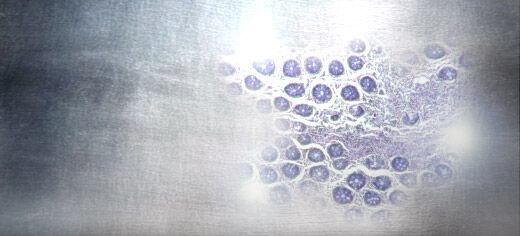
The internet is awash with stories of how silver can be used to treat cancer. Now, lab tests have shown that it is as effective as the leading chemotherapy drug - and may have fewer side-effects.
Results from the study at the University of Leeds, published in Dalton Transactions, show that particular silver compounds are as toxic to cancer cells as the platinum-based drug Cisplatin, which is widely used to treat a range of cancers.
But the crucial difference is that silver is thought to be much less toxic to healthy human cells, and in some cases, can be beneficial. Silver is currently used for its antiseptic and antibiotic properties, in bandages, wound dressings and water purification filters in the third world.
Nausea and vomiting, kidney damage and an increased risk of infection are common side effects of Cisplatin which is used to treat cancer of the lungs, breast, bladder, testicles, head and neck, ovaries and lymph nodes.
Dr Charlotte Willans who is leading the study said: "As many are unfortunately aware, chemotherapy can be a very gruelling experience for the patient. Finding effective, yet non-toxic drugs is an ongoing problem, but these preliminary results are an important step in solving it."
"Our research has looked at the structure which surrounds a central silver atom. This 'shrubbery' is what determines how reactive it is and what it will interact with. Our research has used different types of these ligands to see which is the most effective against cancer cells," adds Dr Willans.
The research, still the first phase of drug development, involved exposing breast and colon cancer cells with different silver-based chemicals for six day periods. It has been shown that ligands which are co-ordinately bonded to the central silver atom through two sites are more effective than those coordinated through only one site. This may be due to the release of silver being much slower and make these compounds more effective over a longer period of time.
A major barrier to the continued development of these compounds is a lack of understanding of how they work. Over the next 12 months, research will focus on investigating how the compounds damage cancerous cells and what effects they have on healthy cells. This will establish whether these silver complexes are in fact less toxic to ordinary human tissue, and will help to design and develop the next-generation of chemotherapy drugs. This work is being carried out in collaboration with Dr. Roger Phillips at the University of Bradford and is funded by Yorkshire Cancer Research.The paper Enhanced cytotoxicity of silver complexes bearing bidentate N-heterocyclic carbene ligands will be published in Dalton Transactions and can be found online here: http://pubs.rsc.org/en/content/articlelanding/2012/dt/c2dt12399a
For more information
Contact: University of Leeds Communications & Press Office: Tel +44 (0)113 343 4031, email pressoffice@leeds.ac.uk
Notes to Editor:
- The 2008 Research Assessment Exercise showed the University of Leeds to be the UK's eighth biggest research powerhouse. The University is one of the largest higher education institutions in the UK and a member of the Russell Group of research-intensive universities. The University's vision is to secure a place among the world's top 50 by 2015. http://www.leeds.ac.uk/